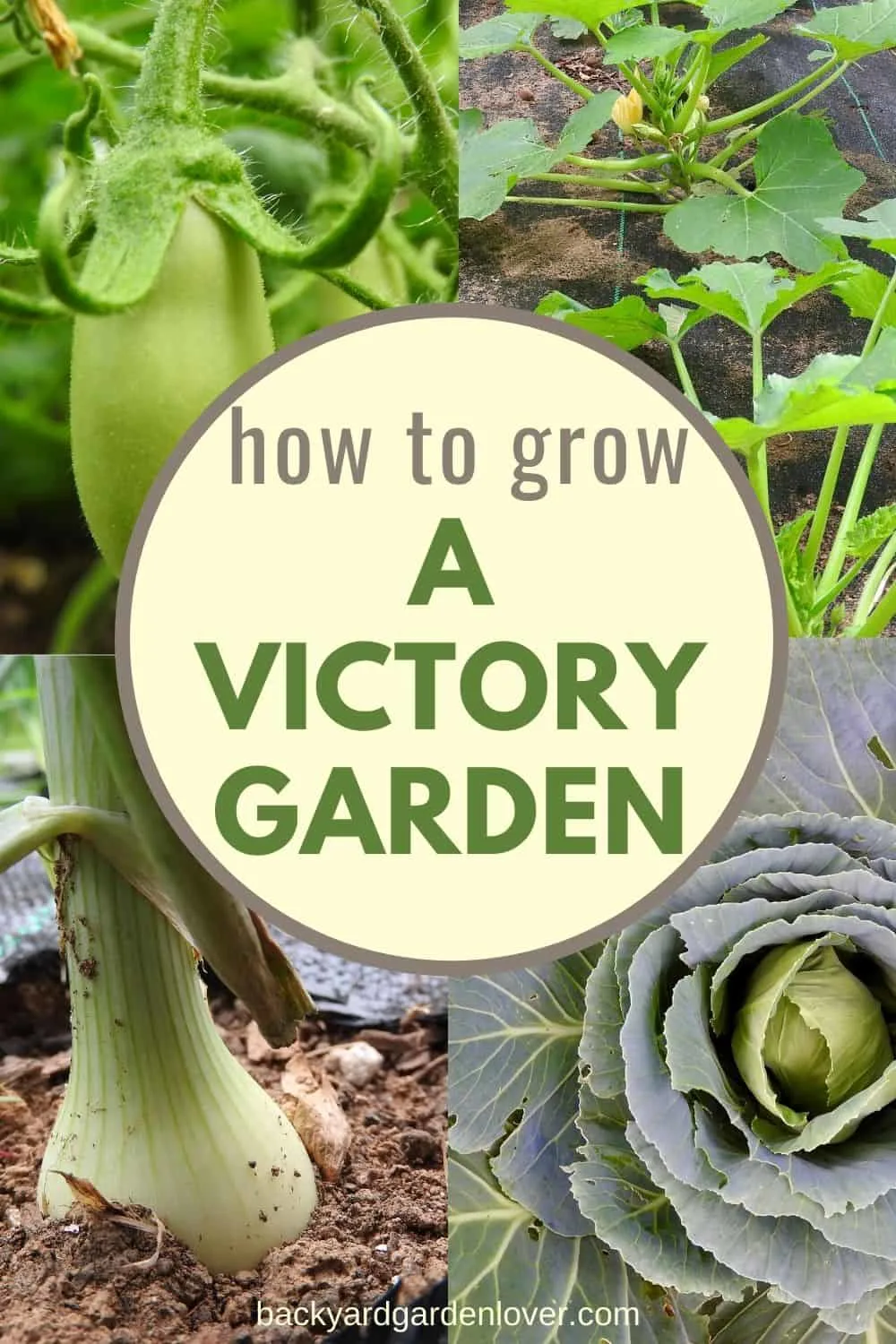Have the recent events made you pause and think about growing more of the food your family needs? I know that’s the case for us. While we’ve been gardening for years, I didn’t really know what victory gardens were. So, I decided to learn more about how to grow a victory garden, and thankfully, one of my friends built one this year.

I invited Ellie to share her experience in building a victory garden with her family. Ellie not only gardens, but she loves photography!
So, let’s hear what she has to say about victory gardening.
We do gardens every year, but a victory garden is done for a different reason. In WWI and WWII, victory gardens were gardens that the government encouraged people to plant to help make sure there was enough food to eat and boost the country’s morale. These gardens helped feed the country’s population, gave people a purpose during the war, and gave them the satisfaction of a harvest ( https://en.wikipedia.org/wiki/Victory_garden).
Related: grow food not lawns!
How To Grow A Victory Garden
The beginning
Our first step in planting a victory garden was to clear off space for a larger garden. In years past we have just used our small raised bed garden and herb beds. This time, however, we cleared off a large area in the back of our property. Several years ago, we used this same space as a garden, but it was too hard to control all the weeds. This year, we decided to take control of it!
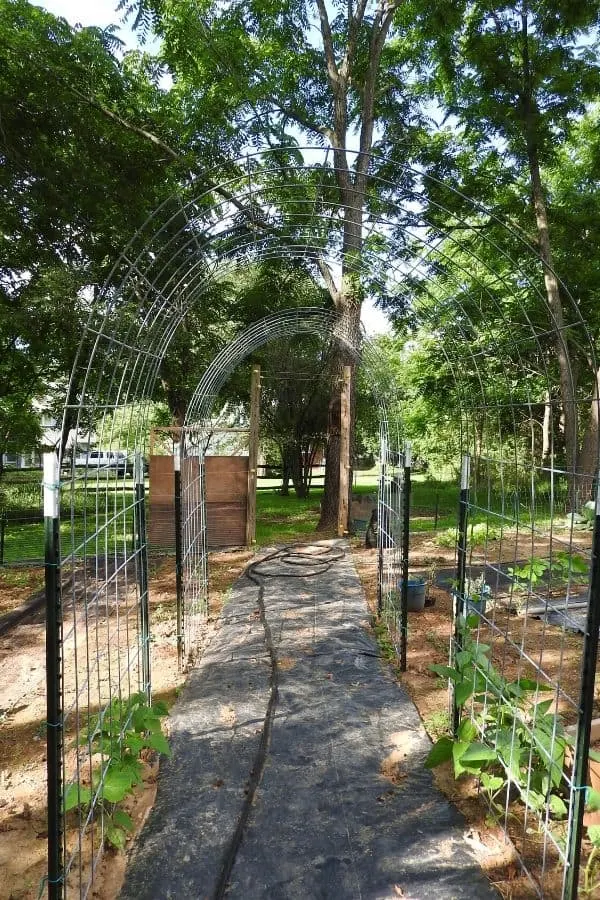
My dad borrowed a rototiller, got his chain saw, and set to work. Here’s what happened next:
- he cut down Black Walnut trees which prevent certain plants from growing well
- rototilled the entire garden
- put down Dewitt Weed Barrier Fabric
- laid heavy black plastic for the walkways
- made cattle wire arches
- set up our electric fence
- bought mulch, topsoil, compost, peat moss, and vermiculite
We learned a lot about soil from Square Foot Gardening by Mel Bartholemew.
Related: What to plant in the square foot garden
By the time he was done, our garden looked like a fortress. No deer would dare to break in!
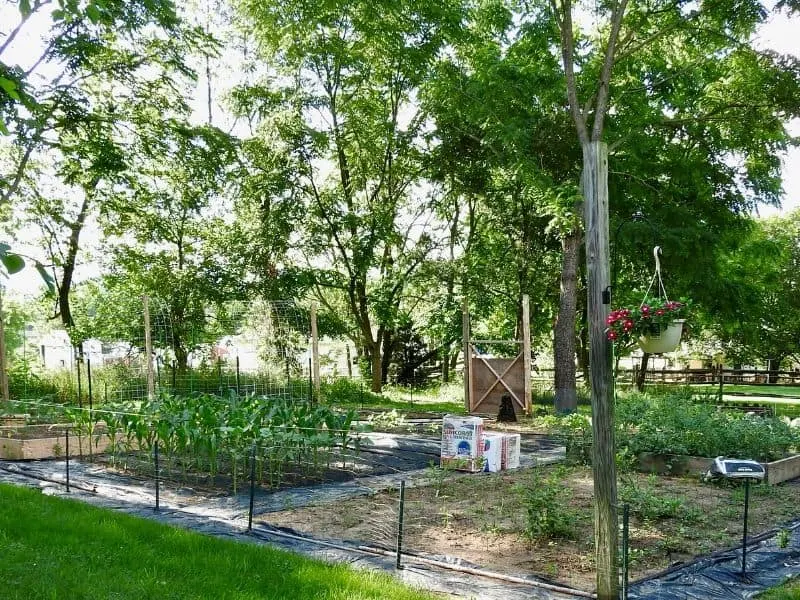
Then, the planning came. It is amazing how much my mom planned before we ever laid one seed in the ground. She mapped out the whole garden, put down weed block, mixed soil, and researched just about every plant we could possibly ever dream of putting in our victory garden. Finally, we began planting.
Plants For The Victory Garden
Garlic
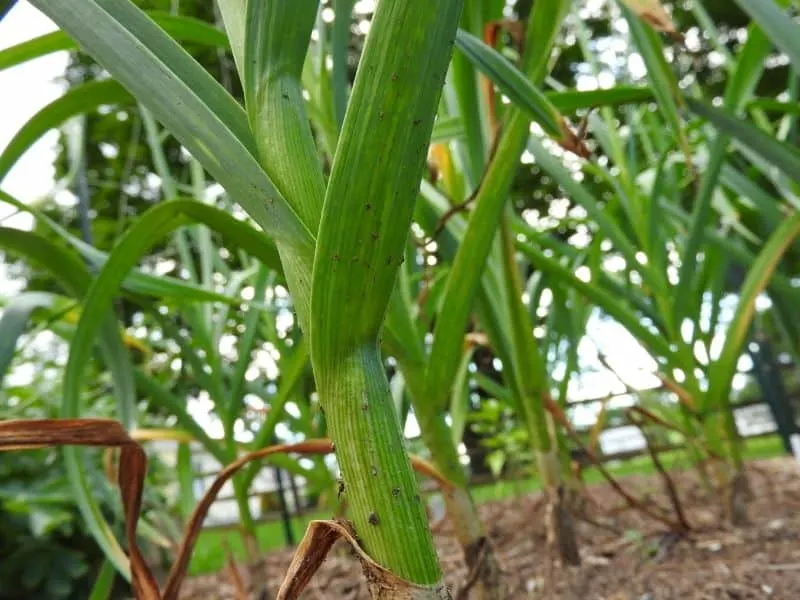
Before I get too far into the planting of our victory garden, though, I want to tell you about the very first plant we put in it. I did not realize it then, but I actually started our victory garden last fall when I planted my garlic.
I love garlic and plant it every year. Each fall, I take the best cloves from last year’s harvest and place them in the ground under leaves and straw. In the spring they pop up and I harvest them about midsummer, depending on when I planted them.
This garlic was thus the very first plant to go in our victory garden, which did not exist at that point.
Learn more about growing and harvesting garlic.
Cold weather garden
Before we could begin planting this spring, we needed to get seeds. We ordered our seeds off of Seed Savers Exchange and Gurneys online. We got our berry plants from Wild Edible Plants, which is a plant nursery in Afton, VA.
All the plants that we put in at the beginning were cold-weather plants because there is still a danger of frost until mid-May in Virginia.
Snow peas
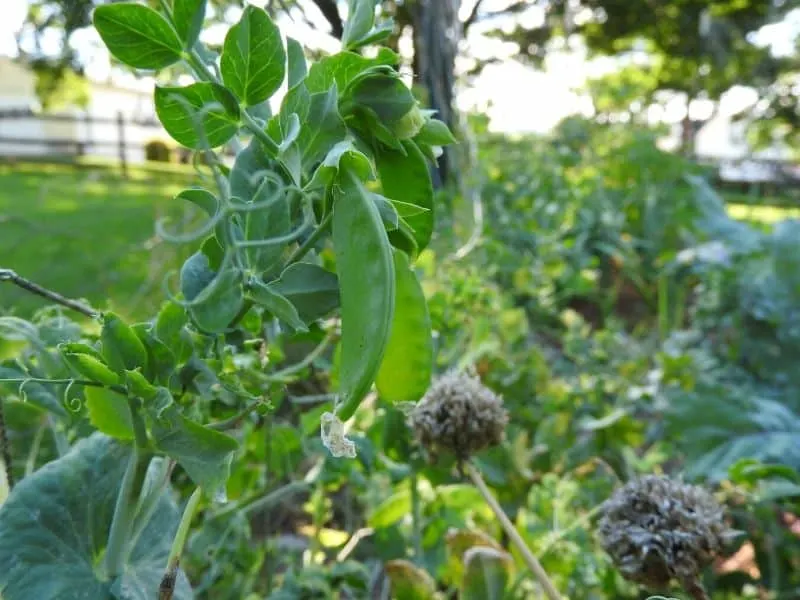
We planted snow peas on March 18. I was very excited when my mom bought the seed packet. I told her that I wanted to plant all of them, so we did! We planted about 116 plants in little Dixie cups and eventually transferred them to our raised bed garden.
They started producing towards the end of May and have given us a lot of peas!
Potatoes
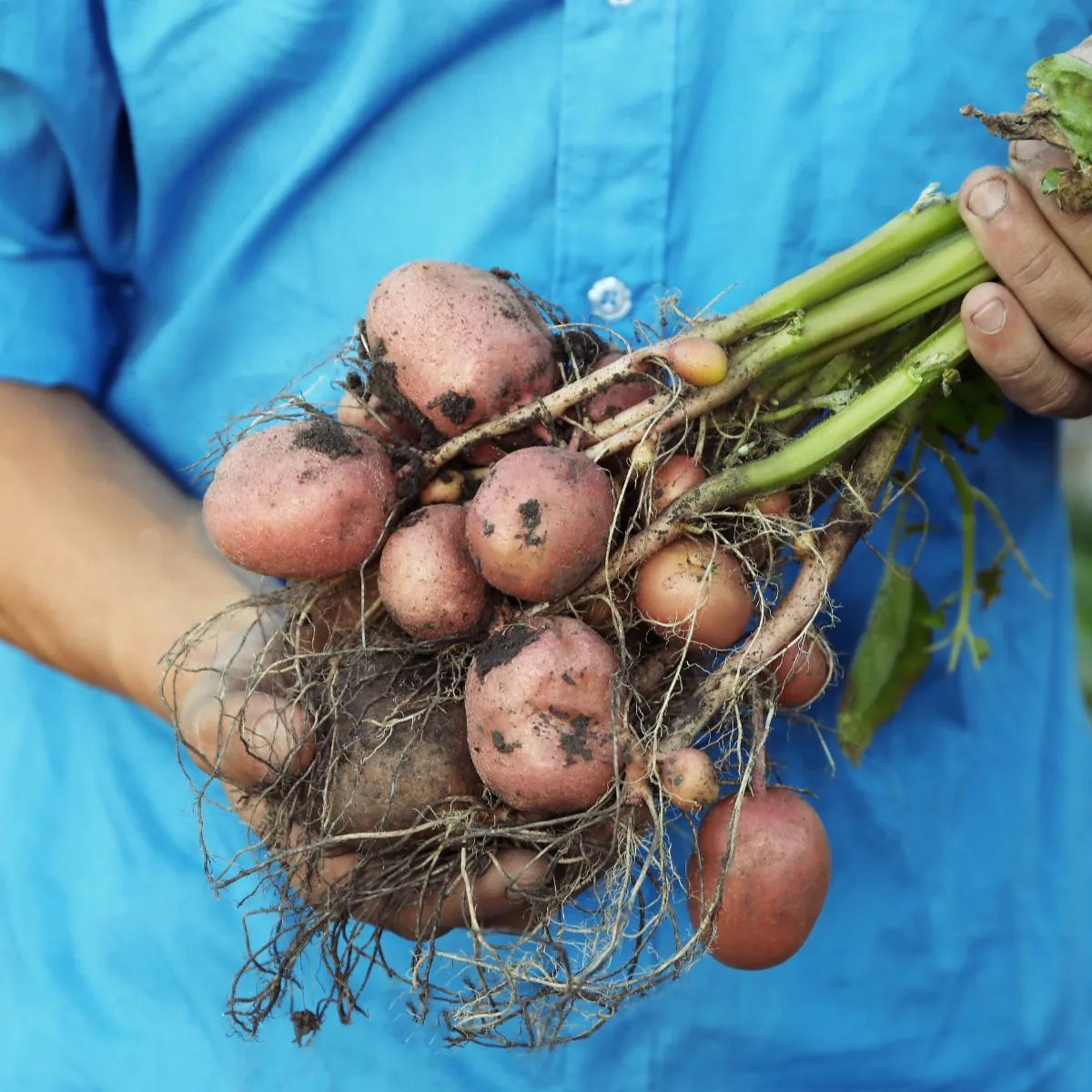
Next, we planted potatoes. We have not grown potatoes for a long time, because when we planted them before, they did not produce well at all. We found out this year that it was probably because of all the black walnut trees that were surrounding the garden. So this year, we decided to try growing them again in another location.
We raised one of the raised beds up another notch and planted two different varieties of potatoes in it. They flourished and then, as predicted, a late frost came. We put extra straw around the plants’ bases to help hold in some of the warmth, but despite our efforts, all the leaves died. We were so sad and decided potatoes must just not like us.
But thankfully, potatoes are resilient! We looked it up on the internet and apparently even when potato leaves freeze, the potatoes stay alive in the ground and regrow leaves. Right now our potatoes are SO tall and are doing wonderfully! Of course, time will tell if the potatoes underground are doing as well as the leaves.
Learn more about growing potatoes.
Lots more veggies
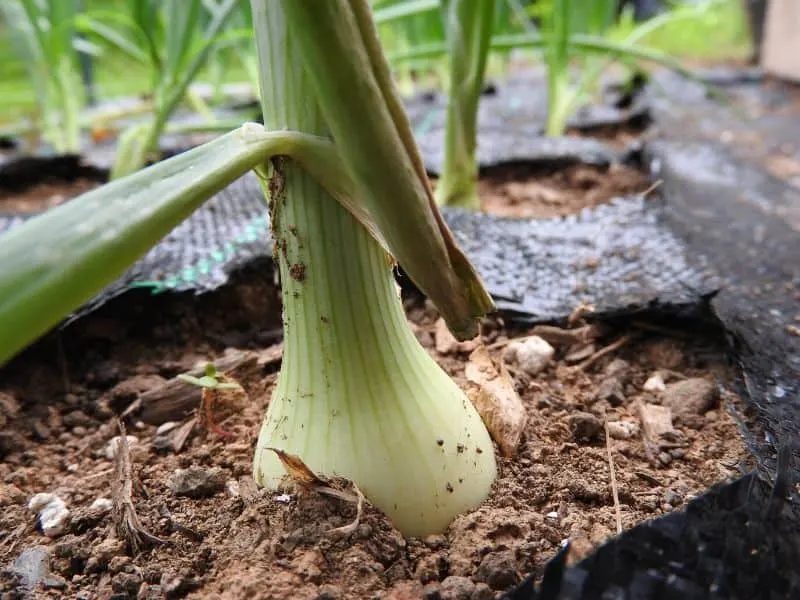
In March and April, we planted a lot:
- kale
- green onions
- carrots
- cabbage
- turnips
- beets
- berries
- and lettuce
All have done well except for the carrots, turnips, and beets. Most of the carrots I planted never came up, lots of turnips came up and then disappeared (bunnies?), and only one beet survived out of all that we planted. However, the rest of our cold-weather garden is flourishing quite nicely.
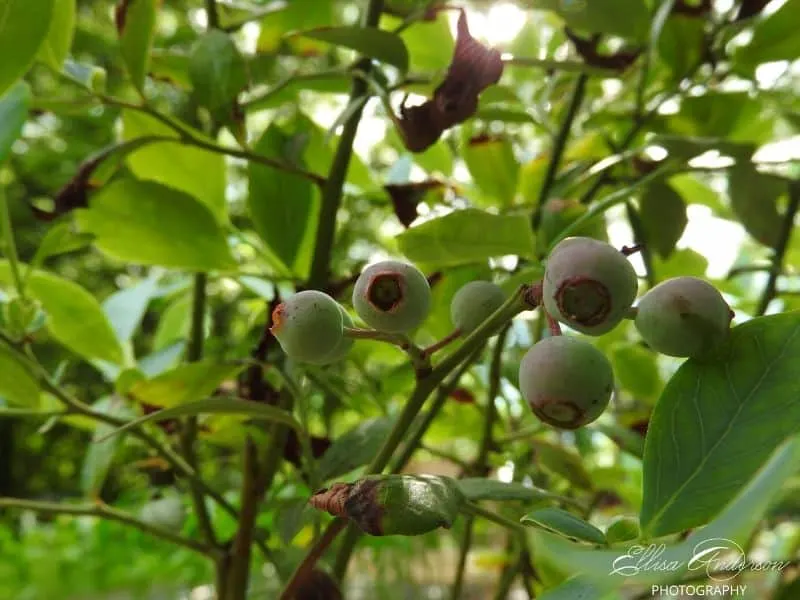
Warm weather garden
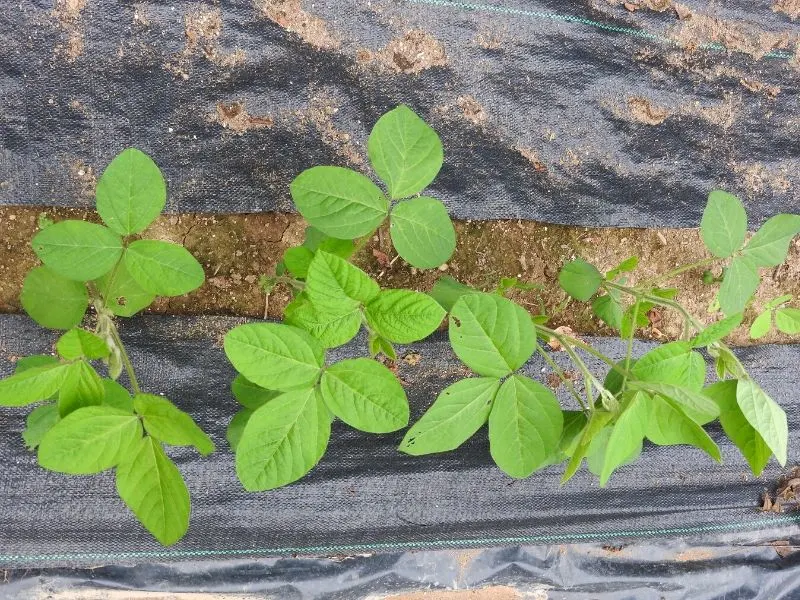
Once the danger of frost had passed, it was time to put in warm weather plants. We planted:
- corn
- soybeans
- cucumbers
- lima beans
- snap beans
- melons
- onions
- tomatoes
- peppers
- cilantro
- squash
- and a few other plants
We have decided to plant our corn and soybeans in several different plantings so that we get several harvests throughout the summer. Right now, our beans, melons, and cucumbers are climbing up the side of the arches in our upper garden.
Everything is growing well and remaining uneaten, except for the soybeans, which have suffered from someone (probably bunnies again) nibbling on their young leaves a little bit.
Salsa garden
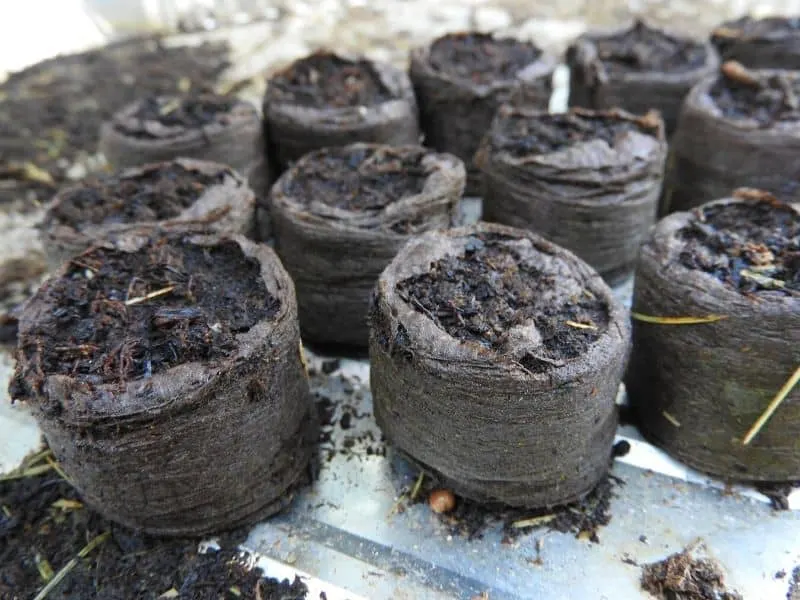
Included in our garden is my own special salsa garden. Nothing reminds my family and me more of summer than my fresh homemade, homegrown salsa! Every summer, we have supper after supper of fresh salsa and chips.
This year, I decided to grow all the ingredients, minus the salt and lemon, that go into that delicious salsa we enjoy every year. Right now I have six Roma tomato plants, four jalapeno plants, eighteen garlic plants, over twenty onion plants, and I also recently started 15 cilantro plants from seed. It is my goal to make salsa at one point using only homegrown food, other than the salt and lemon, of course.
Garden Education
I have learned a lot about how to take care of the plants we are growing as I have worked in our victory garden. For example, onion leaves need to be trimmed every so often so that they do not fall over and cut off their circulation.
Some tomato leaves need to be broken off so that there are not too many to distract the plant from growing tomatoes.
Carrots need to be watered very regularly in order to actually grow (I learned that the hard way).
Too much fertilizer kills plants, and cabbage leaves die if they are touching the electric fence and constantly getting shocked.
I love flipping though gardening books, and always pick up a trick or two.
Practical lesson
I have learned many other practical things as well. For example:
We are like tomatoes in some ways. Sometimes we focus so much on achieving the wrong things that God needs to break off some of our “leaves” in order to remind us to focus on what is truly important. The process may be painful at the time, but in the end, a great harvest will result.
Fun experiences
Not only have I learned some important things from our victory garden, but I have also had many fun experiences. One of them is particularly memorable.
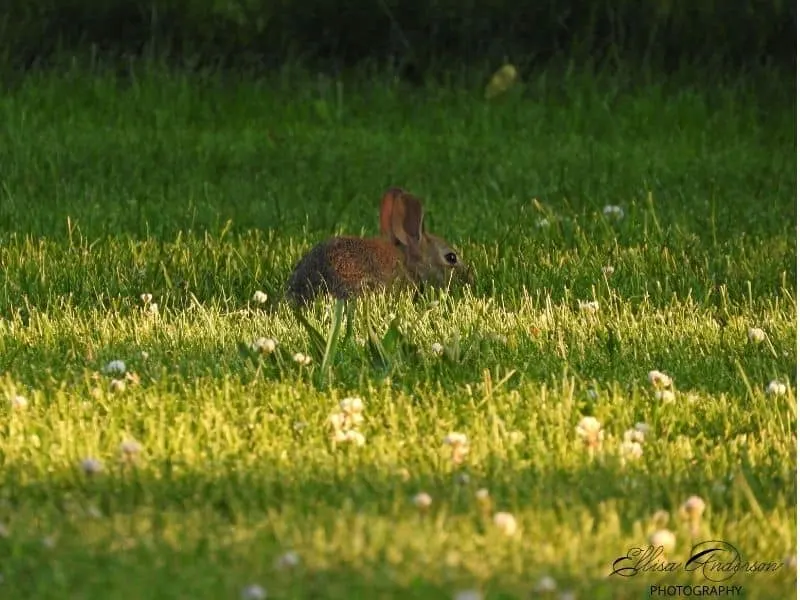
I was out in the lower garden picking peas one evening. It was a beautiful evening with the sleepy calls of birds and the soft glow of the sunset. I already had a nice container full of peas and was working my way down the row. Suddenly, as I reached for a pea, I saw something jump and run away. It was a baby bunny!
We had seen some baby bunnies in the garden earlier that afternoon, but I had completely forgotten about them by now.
I jumped back, surprised, but not as surprised as the bunny. It was so cute and tiny! I moved a little bit down the row to keep from scaring it. A few minutes later, as I reached for a pea, yet another baby bunny jumped and ran away. There were two of them! They were both so adorable that I did not mind that they were in my garden.
We finally concluded that the mama bunny had somehow gotten through the fence and made a nest in our garden. Over the next few weeks, we enjoyed seeing them often. We still see the same bunnies, although much bigger, hopping happily around our yard.
Other surprising experiences in our victory garden have included several snakes and getting shocked by the electric fence on multiple occasions, but I will have to share about those experiences another time.
Growing a victory garden has been a great experience for our family
I am so glad that my family all pitched in and planted a victory garden this spring. It has been and continues to be a fun, yummy, educational project. It has kept us plenty busy during the quarantine and has given us a purpose during an uncertain time.
Because of this garden, we have gotten outside and away from a screen during a time when everything is done on a screen. We are already beginning to enjoy the satisfaction of harvest as well. It has been such a wonderful experience to learn more about plants, get out in nature, learn to work hard, and harvest yummy food!
And it all began when my mom said, “Let’s plant a victory garden.”
I hope you enjoyed Ellie’s experience, and now you know how to grow a victory garden in your own backyard.
